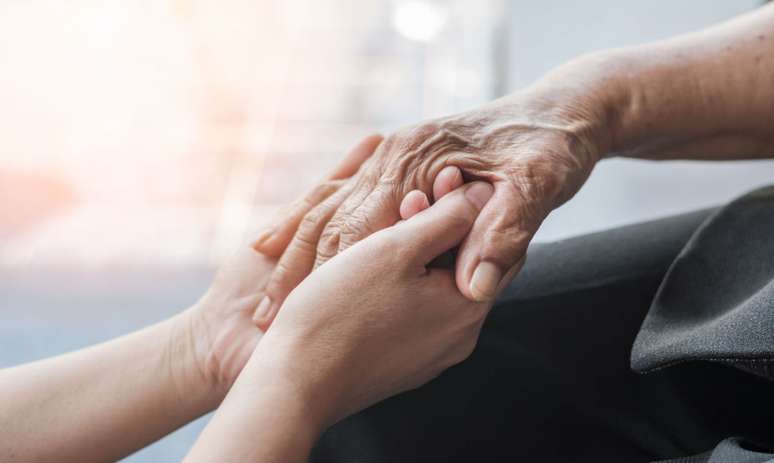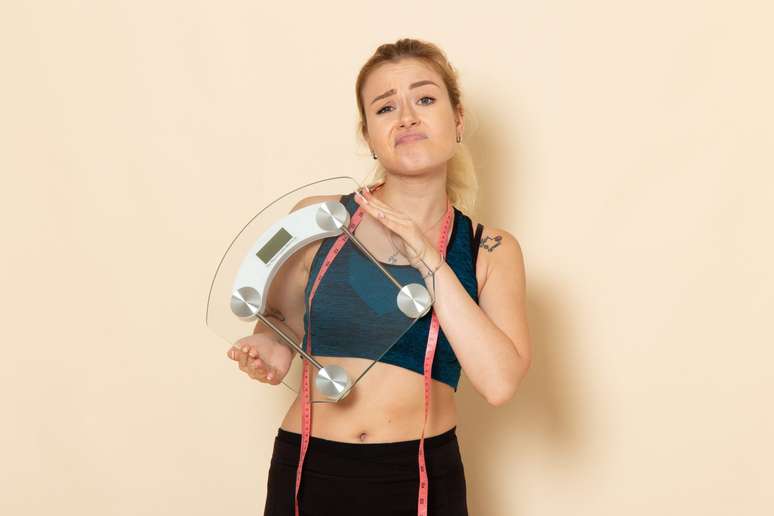The neurologist explains which symptoms turn on an alarm for Parkinson’s, and go beyond the tremors
April 11 is World Parkinson’s Awareness Day. The condition affects about 4 million people worldwide, according to data from the World Health Organization (WHO). The number represents 1% of the world’s population aged 65 and over. In Brazil alone there are 200,000 people suffering from the disease.
html[data-range=”xlarge”] figure image img.img-4d95c7a0e0a91eb86824be8139e7666fenhfbcm6 { width: 774px; height: 463px; }HTML[data-range=”large”] figure image img.img-4d95c7a0e0a91eb86824be8139e7666fenhfbcm6 { width: 548px; height: 328px; }HTML[data-range=”small”] figure image img.img-4d95c7a0e0a91eb86824be8139e7666fenhfbcm6, html[data-range=”medium”] figure image img.img-4d95c7a0e0a91eb86824be8139e7666fenhfbcm6 { width: 564px; height: 337px; }
Parkinson’s symptoms
Contrary to popular belief, not all Parkinson’s patients have tremors. Who explains it is Dr. Guilherme Torezani, coordinator of cerebrovascular diseases of the Icaraí Hospital and coordinator of Neurology of the Hospital and Clínica de São Gonçalo.
But when present, the symptom occurs in one of the resting limbs and extremities of the body. The main symptoms of the disease are, in fact, muscle stiffness and slowness of movement – in addition to the progressive loss of balance (postural instability).
“The onset of motor symptoms may be subtle, with slowness in one of the hands, leading to a reduction in the handwriting when writing (called micrographia). Or, even more commonly, a reduction in the swing of one of the arms while walking “, clarifies the expert.
According to the doctor, there are other non-motor symptoms as well. This is the case, for example, with a decrease in smell, sleep disturbances, constipation (constipation) and even depression.
As far as sleep is concerned, one specific type, called “REM sleep behavior disorder,” has been much studied. This stage of sleep comes from the English “rapid eye movement” and is characterized by the occurrence of dreams. It happens that our brain produces a paralysis of the whole body, but that in this disorder the paralysis is absent. As a result, the patient has complex movements, as if he were living her dreams.
Previous studies have shown that the presence of this alteration, which may precede the onset of motor symptoms by many decades. Therefore, the signal is associated with a very high risk of developing Parkinson’s disease and other “similar” diseases.
Causes
Even with scientific advances, such as the identification of certain proteins and metabolic changes in patients, it is still unknown exactly what reasons lead to this progressive loss of neurons and the onset of Parkinson’s disease.
Guilherme explains that, in general, the disease is said to be idiopathic, i.e. there is no clear factor that produced Parkinson’s. However, there are some genetic forms that can run in families, even if they are rarer forms.
Furthermore, another factor closely related to the risk of developing the disease is exposure to certain types of pesticides. In fact, many of them have been banned in several countries. This fight against the release of these pesticides is still a point that Brazil needs to evolve, underlines the expert. He adds that in rural communities the incidence of Parkinson’s is often higher than in urban areas.
“As we age, it is natural that we experience the progressive death of dopamine-producing neurons. It is responsible for motor learning, the reward system, and other various complex brain functions. However, in the case of Parkinson’s patients, these cells are lost with faster, reducing dopamine levels,” explains the doctor.
He adds that this preferential loss of dopamine neurons may have to do with the fact that these cells have far more connections (synapses) than others in our brains, making them more susceptible to the process of neurodegeneration.
Treatment
According to Guilherme, in the 1960s, with the discovery of the use of levodopa in treatment, there was a drastic change in the natural history of the disease. The result was so powerful that it was dubbed the “miracle effect”.
“Levodopa, which remains the primary symptom treatment to this day, is a form of dopamine that manages to be ingested and travels to the brain. It is thought of as a continual turnover of this substance that the patient is no longer able to able to produce effectively,” he explains.
Knowing how to administer the dose and side effects with a neurologist who has experience with Parkinson’s is very important to the success of treatment, the doctor emphasizes. This is because, with proper care, the patient can carry out many daily activities and have a practically normal life for many years.
However, for the neurologist, treatment is not just limited to drugs. It is necessary to combine the practice of continuous motor physiotherapy, occupational therapy and physical activity, which helps improve balance, physical strength and saves autonomy and self-esteem.
“In cases where there is no improvement with the use of these drugs, it is also possible to perform – when appropriately indicated – a surgical procedure, called ‘Deep Brain Stimulation’ (or DBS). DBS has already been studied for many years and has been increasingly widespread in treatment, with very favorable results in the control of tremor, muscle stiffness and slowness of movement,” explains the neurologist.
However, it is important to research a group of functional neurosurgeons and neurologists specialized in Neuromodulation, in order to verify the precise indication (or not) of the surgery. “It is useless to go through the surgical procedure if the screening process has not been adequate,” she warns.
Cannabis and Parkinson’s
The doctor. Guilherme also points out that there is a lot to comment on cannabis treatment. While it sounds promising, more studies are needed to better understand the role of these drugs in treatment.
“We have found more than 100 different chemicals in Cannabis and we are still beginning to understand their function. Cannabidiol, for example, although it does not have a level of evidence for the indication, appears to be more beneficial for non-motor symptoms than engines of the disease. I believe that we will still have to wait for large clinical studies, which are carried out very carefully, in order to be able to prescribe the derivatives of Cannabis in a safe way and on the basis of scientific data”, he justifies.
Source: Terra
Ben Stock is a lifestyle journalist and author at Gossipify. He writes about topics such as health, wellness, travel, food and home decor. He provides practical advice and inspiration to improve well-being, keeps readers up to date with latest lifestyle news and trends, known for his engaging writing style, in-depth analysis and unique perspectives.








